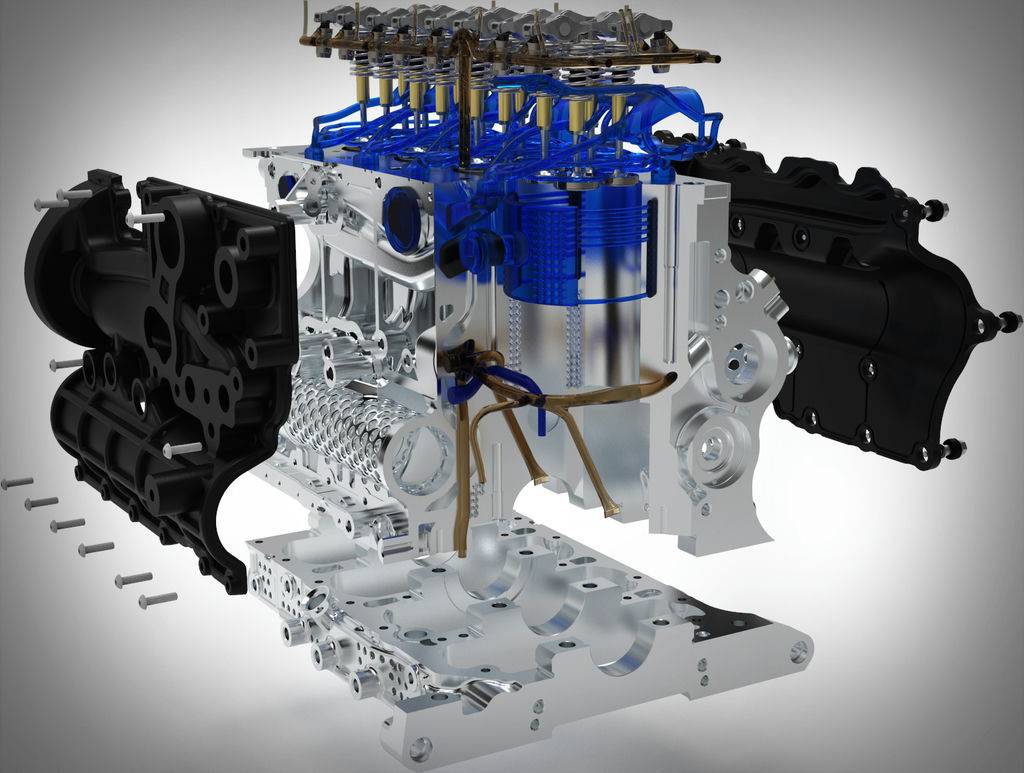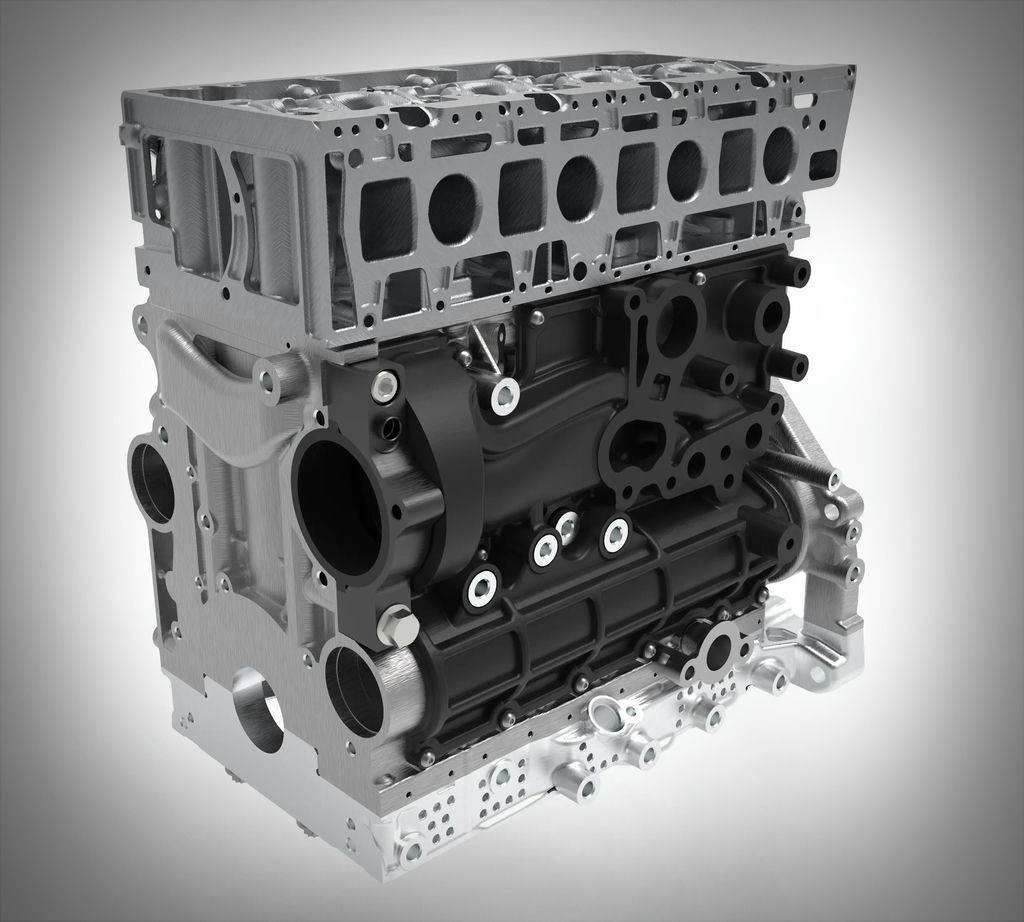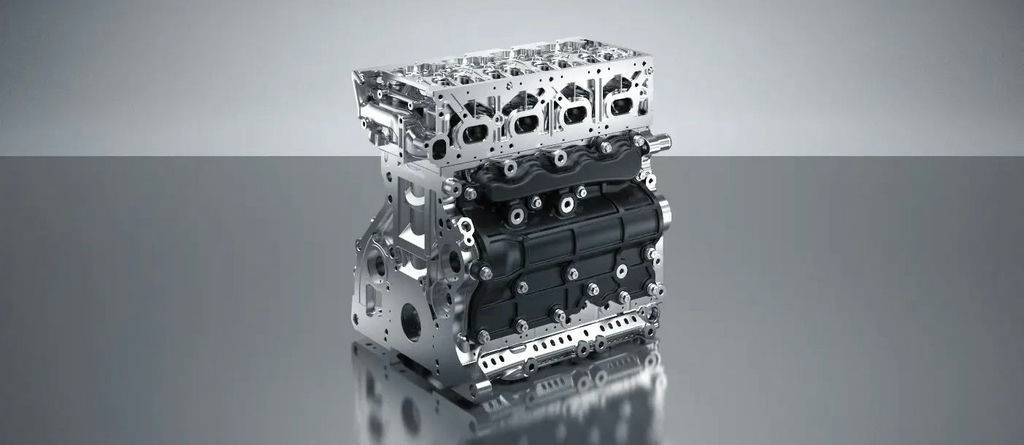Reducing vehicle weight reduces CO2 emissions and remains a key concern for auto manufacturers. FEV and its partners in the LeiMot (Lightweight Engine) research project use additive manufacturing to demonstrate further combustion engine emission economies. FEV engineers were able to make engine functions, such as cooling or oil circulation, more efficient. Large assemblies of a passenger car reference diesel engine weight in around 21 percent lighter.
The German Federal Ministry for Economic Affairs and Energy funds the LeiMot research project. FEV is leading the research consortium, which consists of a renowned automobile manufacturer, research institutes, technical colleges, development service providers, equipment manufacturers and automotive suppliers. LeiMot strengthens conventional production processes by exposing them to the increasing benefits of additive manufacturing.

All-aluminum modern combustion engines have already reached a very respectable weights, thus reducing emissions. Further innovations can only be realized with AM. Hence FEV’s focus on the cylinder head and the crankcase of a modern two-litre diesel engine. The two components were manufactured using laser powder bed fusion. Ralf Bey, head of the LeiMot project, described the materials being used: “the aluminum alloy AlSi10Mg, but fibre-reinforced plastics were also taken into account. The assemblies realized in this way weigh approximately 21 percent less. At the same time, the new, installation-compatible engine components (cylinder head and crankcase) increase drive efficiency.”
Cylinder head loses mass and retains load capacity
The redesigned cylinder head alone saves 2.3 kilograms of weight, or 22 percent, compared to the original component. High-stress mechanical areas were reinforced to accommodate bending loads from combustion; the overall engine structure bears torsional loads.
“The exhaust duct could be 3D printed directly with thermal insulation thanks to additive manufacturing,” said Bey. “This not only heats up the exhaust after-treatment systems faster. The turbine inlet temperature and thus the efficiency of the turbocharger is also increased.”
Crankcase rethought
The re-designed crankcase further reduced the engine’s overall weight by 5.1 kilograms. The crankcase was re-designed using the so-called short skirt design with an aluminum substructure (bedplate). The friction-reduced main bearing diameters of the basic diesel engine allowed engineers to replace the steel bearing caps with the bedplate.

The crankcase bulkheads were designed to withstand horizontal load structures, which were stiffened at suitable points by a cross-rib composite. Additional reinforcement was provided by two weight-reduced connecting tubes around the balancer shafts. Based on topology analyses, low-load zones were optimized by lattice structures and cavities.
The crankcase side covers were, moreover, made of glass-fibre-reinforced phenolic resin; they weighed about 15 percent less.
Less water brings more cooling
The new cross-flow cooling system further saved weight by lowering the temperatures of the cylinders in a targeted manner and reducing the required amount of water. One of the main differences in design was that individual cooling lines in the cylinder head replaced the large-volume water jacket. This reduced temperatures in the combustion chamber by up to 40 percent. Despite 40 percent less coolant, the wall temperatures were significantly lower than those of the reference engine: the warm-up phase after a cold start can be shortened and the drive power of the water pump can be reduced.
Advanced oil circuit reduces pressure loss
A developed oil circuit created further advantages during cold starts and in normal operating conditions. The optimization measures include a new type of line routing that replaces sharp deflections with bends. Cross-sectional design changes also enhanced oil circulation within the engine. These changes reduced pressure loss in the cylinder head and crankcase by 22 percent. An inverted siphon prevented the oil from draining when the engine was at a standstill. As a result, the appropriate oil pressure for the valve train was available more quickly after engine start-up, and hollow bulkheads were used for oil return.


